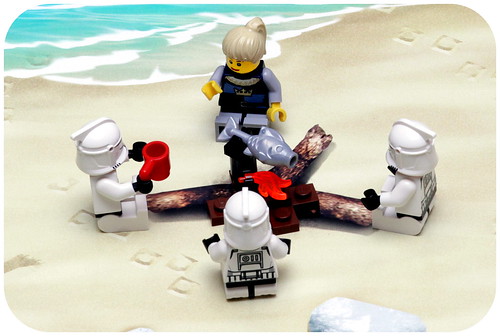Why Conferences Should Try To Recapture The Campfire Experience
Many of us have been to summer camp.
We sleep in bunks in cabins. Swim in lakes. Row canoes down the stream. Take adventure walks through the forest. Eat meals family-style in log cabin lodges. Make lots of crafts.
Our day typically ends with everyone sitting around a campfire as we tell stories and sing songs. Many of us also made smores and roasted marshmallows.
It’s a unique experience. Are you remembering some of your childhood summer camp experiences now?
Why The Campfire Configuration Works
Sitting low to the ground in a tight circle heightens our awareness of one another and the task that is occurring. Our posture encourages us to pay attention and engage. The arrangement of others in the circle signifies a community. It provides a sense of belonging to a tribe.
The campfire configuration removes obstacles and fosters an opportunity for vulnerability. It provides an opportunity to get closer to each other and bond.
How To Use The Campfire Experience
The contrast between sitting low to the ground versus traditional seating and standing helps attendees feel safe. There is something primal about being low to the ground. The campfire circle is a great tool to help attendees debrief as well as discuss controversial and sensitive topics.
The campfire experience is best kept as a short activity. Western cultures are not used to sitting on the floor or sitting low to the ground. It is a common seating option in Eastern cultures and helps open up dialogue about why the experience did or didn’t work.
The traditional conference round uses a table that can actually serve as a barrier to each other. It’s something to hide behind and acts as an obstacle keeping others from invading our personal space.
So when should you use the campfire experience? Use it for reflection and peer sharing. It’s a great way for people to share personal stories about a specific topic or issue. Keep the groups small with six to eight people in a circle.
Conferences can capture this same spirit of the campfire using stools, foam cubes, bean bags or low sitting furniture. Organizers need to be aware of those with disabilities or difficulty sitting low to the ground. They should provide other options for sitting for those that want or need it.
No, the campfire experience should not be used for kumbaya moments of holding hands and singing songs. It should be used for moments of intimate sharing, contemplation and thinking. It’s not about a touchy-feely moment. It’s about deliberate, intentional expressive thought and ruminations.
Managing Attendees’ Expectations With Campfire Moments
When thinking about applying a campfire experience, managing attendees’ expectations is critical. It’s vital to explain to the audience the how, why and what of the experience. If not, some may rebel as they will feel the activity is childish.
If you ask attendees to be aware of their own emotions, to observe how others react and to evaluate what does and doesn’t work during the experience, it will help them transition into this format. If you just jump into the campfire experience without any setup, it may not be as effective.
If some attendees don’t want to participate or feel uncomfortable with the experience, ask them to stand in part of the room and act as observers. Have them take notes on attendees’ body language and reactions. Or they can hold a standing meeting with others in another part of the room as they reflect and share. That way they can still participate
What has been your experience with the campfire circle in conference or events? Why do you think many adults immediately want to avoid this type of experience at a conference?



[…] Affairs folks respond: @EricaKthompson’s Storify – http://storify.com/ericakthompson/conferences-reconsidered […]
[…] Affairs folks respond: @EricaKthompson’s Storify – http://storify.com/ericakthompson/conferences-reconsidered […]